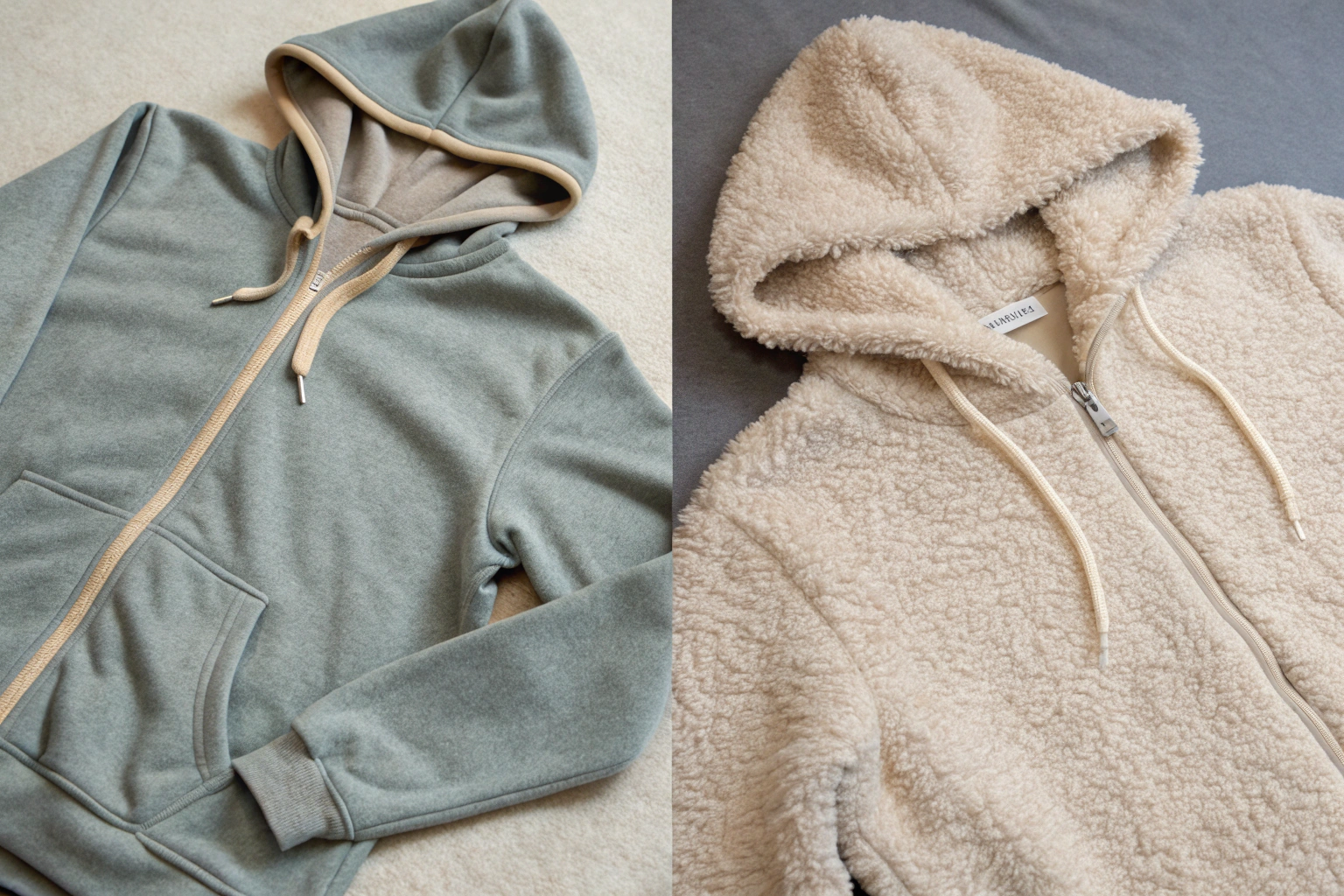When sourcing fabrics for your next apparel line, you need to understand your material options. Two of the most popular and sometimes confused fabrics are French terry and fleece. Both offer comfort and versatility, but they are fundamentally different in construction, feel, and ideal use. Choosing the wrong one can impact the functionality, customer satisfaction, and overall success of your product.
Knowing the key differences between French terry and fleece is crucial for making an informed sourcing decision for your clothing line. This guide will break down their constructions, characteristics, and best applications. We will compare them side-by-side to help you, the buyer, select the perfect fabric for your specific market needs, ensuring your garments perform as expected.
Let's dive into the distinct worlds of these two fabrics and clarify which one is the right fit for your project.
What is French Terry Fabric Construction?
French terry is a versatile knit fabric that is a staple in many fashion collections. Its unique structure makes it a go-to for garments that require a balance of comfort, style, and moderate warmth. Understanding its build is key to appreciating its properties.
French terry is a weft-knit fabric, like jersey, but with a crucial difference. It is made on a special circular knitting machine that creates loops of yarn on one side and a smooth, flat surface on the other. These loops are not sheared, which gives the inside of the fabric its characteristic soft, fluffy, and absorbent texture. The face side appears as a standard, smooth knit. This construction is different from a terry cloth, which has loops on both sides and is typically used for towels. French terry falls under the category of knitted fabrics, prized for their stretch and comfort.
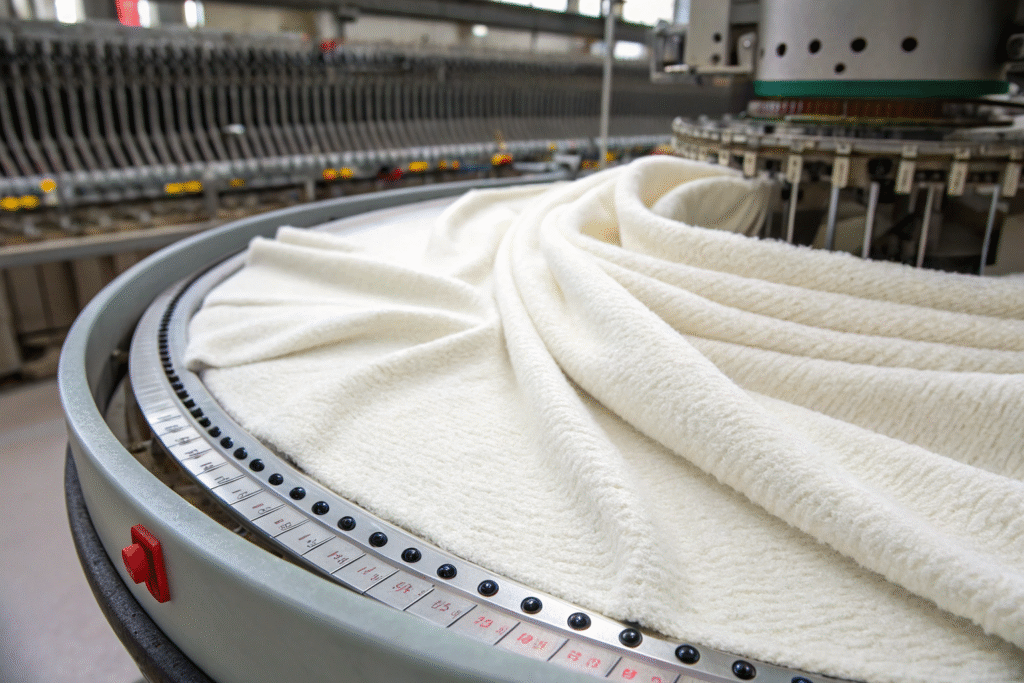
How is French Terry Different from Standard Terry?
The primary difference lies in the loop construction. Standard terry cloth, used for bathrobes and towels, has loops on both sides of the fabric. This creates a highly absorbent and thick material. French terry, in contrast, has loops on only one side (the back) and a smooth surface on the front. This makes French terry lighter, more drapey, and better suited for fashion garments like hoodies and joggers, whereas standard terry is optimized for maximum absorbency.
What Are the Main Characteristics of French Terry?
French terry boasts several key traits that make it a manufacturer's favorite. It is moisture-wicking; the looped back absorbs sweat and pulls it away from the skin. It is breathable, allowing for air circulation, which prevents overheating. While not as warm as fleece, it provides a light, comfortable warmth, making it perfect for mid-weight garments. Its inherent stretch and excellent drape quality allow for comfortable, movement-friendly clothing that doesn't sacrifice style.
What is Fleece Fabric Made Of?
Fleece is a synthetic fabric renowned for its exceptional warmth and softness. It was originally created as a synthetic alternative to wool and has become synonymous with cold-weather gear and loungewear. Its manufacturing process is key to its insulating properties.
Fleece is typically made from polyester. The process begins with creating a knitted or woven base fabric. This base is then brushed vigorously by machines with fine metal brushes. This brushing raises the fibers from the base fabric, creating a thick, soft, and fuzzy pile on the surface. This raised pile traps air, creating a layer of insulation. High-quality fleece, like polar fleece, goes through an additional step like shearing to create a uniform, plush surface. Some advanced fleeces are made from recycled polyester (rPET), such as plastic bottles, making them a popular choice for eco-conscious brands.
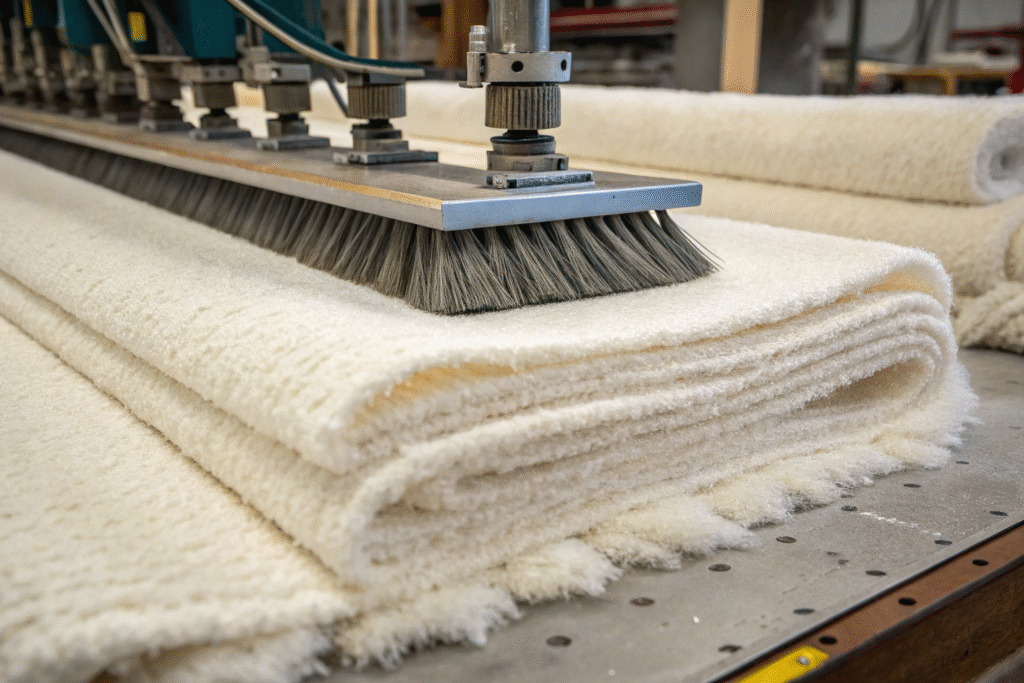
Is Fleece a Natural or Synthetic Fabric?
Fleece is a synthetic fabric. It is primarily composed of polyester, a man-made fiber derived from petroleum. Some variations may use other synthetic fibers like polyamide, but the vast majority of fleece on the market is polyester-based. This is different from natural wool, which comes from sheep. The synthetic nature of fleece makes it hydrophobic, meaning it dries quickly and is resistant to water absorption, a key advantage over natural alternatives.
Why is Fleece So Good at Keeping You Warm?
The secret to fleece's warmth is in its pile. The brushing process creates millions of tiny fiber loops that trap a large volume of air. Air is a poor conductor of heat, so this trapped layer acts as excellent insulation, keeping body heat in and cold out. Furthermore, because it is made from polyester, it wicks moisture away from the body, keeping the wearer dry. A wet wearer loses body heat much faster, so this moisture-wicking ability is crucial for maintaining warmth in various conditions.
French Terry vs Fleece: Which is More Durable?
Durability is a major factor for brands that want their garments to last. Both French terry and fleece are generally durable, but they have different strengths and potential weaknesses that can affect their lifespan.
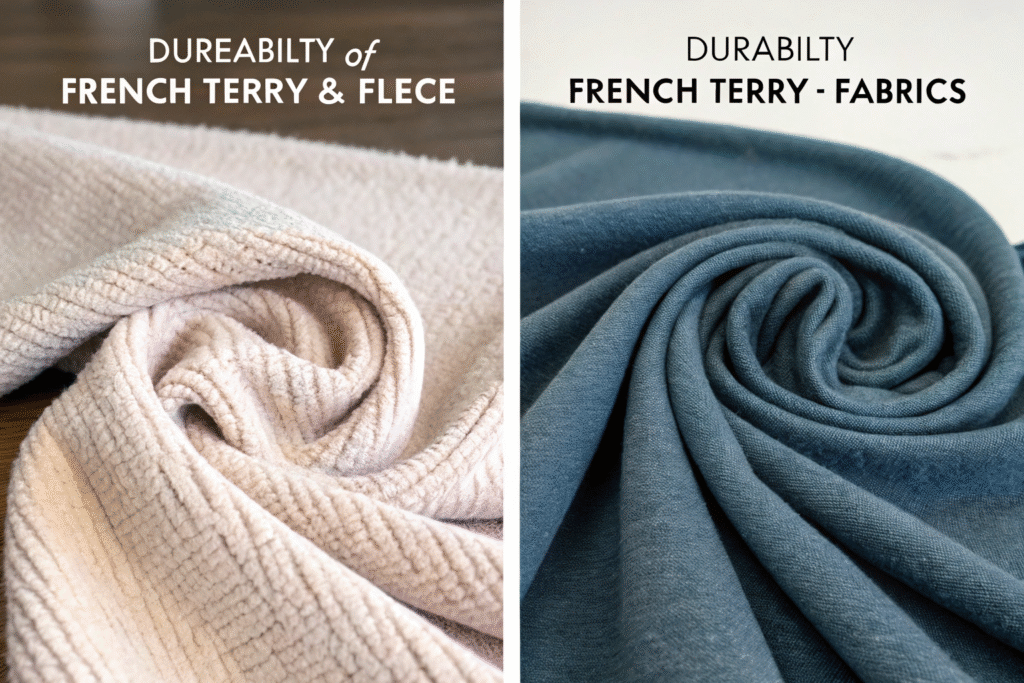
How Does Pilling Affect Each Fabric?
Pilling is the formation of small, tangled balls of fiber on the fabric's surface. Fleece, due to its soft, brushed nature, is more prone to pilling, particularly in areas of friction like under the arms. The quality of the fleece is critical; higher grammage fleece and tighter construction resist pilling better. French terry can also pill, but a high-quality, compact knit, especially with a blend like cotton-polyester, will show far less pilling over time, maintaining a cleaner appearance.
Which Fabric Holds Its Shape Better Long-Term?
French terry generally has better shape retention over the long term. Its knitted construction provides good mechanical recovery, meaning it can bounce back to its original shape after stretching. Fleece, while warm and cozy, can experience "bagginess" over time, especially at the elbows and knees. The fabric may not fully recover after being stretched, leading to a worn-out look faster than a robust French terry. For garments that need to maintain a sharp, structured look, French terry often has the advantage.
When Should You Choose French Terry Over Fleece?
Choosing between these fabrics ultimately depends on the intended use of the final garment. Each has a specific set of strengths that make it the ideal choice for different applications and seasons.
French terry is the superior choice for transitional seasons and fashion-forward garments. Its lighter weight, better drape, and smoother appearance make it perfect for stylish athleisure wear, lightweight hoodies, and joggers that can be worn in spring and fall. It is also more breathable than fleece, making it suitable for activities where temperature regulation is important. For manufacturers targeting the athleisure market or creating fashionable, everyday basics, French terry offers the right blend of comfort and style.
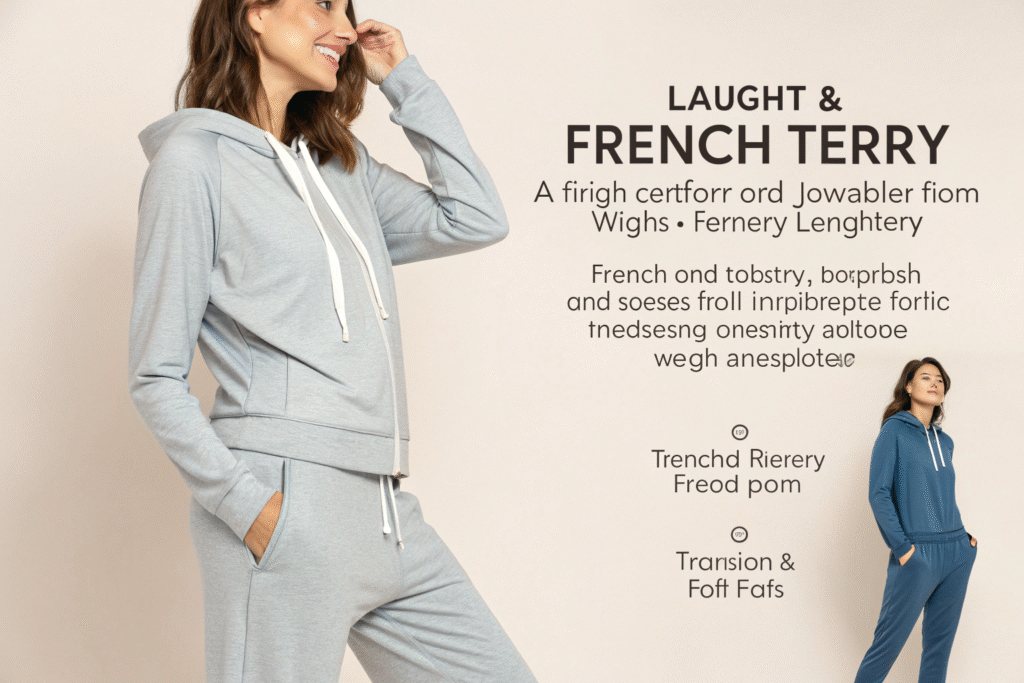
What Are the Best Garment Types for French Terry?
French terry excels in garments where style and moderate comfort are key. Its drape quality makes it ideal for:
- Fashionable hoodies and sweatshirts
- Joggers and sweatpants
- T-shirts and long-sleeves
- Athletic wear like yoga pants and light jackets
Its versatility allows it to be dressed up or down, making it a foundational fabric for many contemporary brands that focus on a clean, urban aesthetic.
What Are the Best Garment Types for Fleece?
Fleece is the undisputed champion for pure warmth and comfort in low-activity or cold-weather scenarios. It is the best choice for:
- Heavy-weight hoodies and jackets
- Lining for outerwear
- Winter hats, scarves, and gloves
- Blankets and loungewear
For customers who prioritize maximum coziness and insulation, such as in outdoor camping gear or winter sportswear layers, fleece is the clear winner. Its quick-drying properties also make it a functional choice for outdoor activities.
Conclusion
Understanding the fundamental differences between French terry and fleece is essential for making smart sourcing decisions. French terry, with its loop-back construction, offers a balanced blend of style, breathability, and light warmth, making it ideal for fashion-centric athleisure and transitional clothing. Fleece, with its brushed pile, provides unmatched insulation and cozy comfort, perfect for cold-weather gear and loungewear. Your choice ultimately hinges on the desired function, season, and style of your end product.
If you are looking for a reliable partner to co-create high-quality French terry, fleece, or any other fabric for your next clothing line, we are here to help. At Fumao Textiles, we leverage our deep expertise in the Keqiao textile hub to provide end-to-end fabric solutions, from agile R&D to stringent quality control. Let's discuss how we can bring your vision to life. For a direct conversation about your specific needs, please contact our Business Director Elaine at elaine@fumaoclothing.com.

